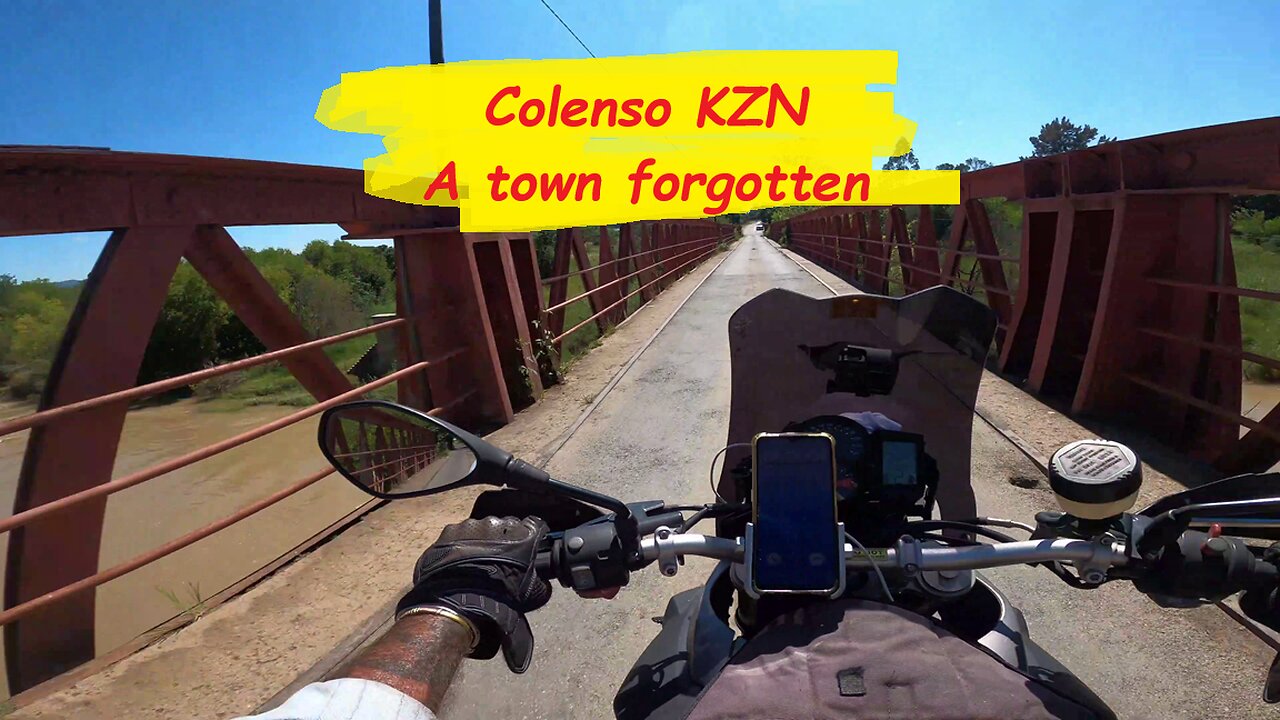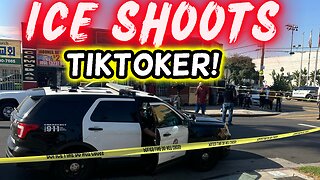Premium Only Content

Colenso #kzn - A town forgotten and a ghost of itself
A dog and his driver (@jontysdriver)
Music playlist - https://www.youtube.com/watch?v=ReXZDaaM3x8&list=PL9ciOxBTp3nR8nixaUhVETRXczQpw8as8
Contact & Socials:
https://www.jontyknine.co.za/contact/
https://www.jontyknine.co.za/driver-contact/
061 513 1103
[email protected]
History of Colenso, KwaZulu-Natal, South Africa
Colenso is a small town in KwaZulu-Natal, South Africa, located on the southern bank of the Tugela River along the R103 road, approximately 190 km northwest of Durban. The town’s history is deeply tied to its strategic location, colonial settlement, and significant role in historical conflicts, particularly during the Anglo-Boer War.
Early History and Establishment
1855: Colenso was established as a settlement at Commando Drift, a ford on the Tugela River, which served as a key stopover point on the wagon transport trail between Durban and the South African Republic (Transvaal) and Orange Free State. The settlement was named after John William Colenso, the Anglican Bishop of Natal, known for his advocacy for the Zulu people.
1879: The ford was replaced by the Bulwer Bridge, named after Sir Henry Bulwer, the Lieutenant Governor of Natal, improving connectivity.
1886: The railway line from Durban to Ladysmith, crossing the Tugela River at Colenso, was opened, enhancing the town’s importance as a transport hub.
1926-1958: Colenso was proclaimed a township in 1926 and achieved borough status in 1958, reflecting its growth. A coat of arms and flag were registered, symbolizing its civic pride. The town also became associated with the “159 Colenso Battery” of the Royal Artillery.
Role in the Anglo-Boer War (1899–1902)
Colenso’s strategic position at the intersection of the main north-south transport route and the Tugela River made it a focal point during the Second Anglo-Boer War, particularly in the efforts to relieve the Siege of Ladysmith:
Battle of Colenso (15 December 1899): This was a significant engagement during the “Black Week” of the war, where British forces under General Sir Redvers Buller suffered a major defeat against Boer forces led by Louis Botha. The British lost 143 men, with 756 wounded, while the Boers suffered only 8 fatalities and 30 wounded. The battle highlighted poor British preparation and leadership, with notable losses including Lieutenant Freddy Roberts, son of Field Marshal Lord Roberts.
Battle of Tugela Heights (14–27 February 1900): A series of engagements near Colenso culminated in the British breaking the Boer lines, leading to the relief of Ladysmith on 28 February 1900. Two Victoria Crosses were awarded for bravery during these battles.
The town’s historical significance is preserved in sites like the Ambleside Military Cemetery and the Robert E. Stevenson Museum, which document its role in the war.
Economic and Social Development
1922–1985: The construction of a power station in 1922, opened in 1926 for South African Railways, became the town’s primary industry. The power station capitalized on the region’s steep railway gradients, utilizing electrification and regenerative braking.
Population and Culture: By the early 2000s, Colenso had approximately 6,000 residents, maintaining a quiet, rural atmosphere. It is known in Zulu as eSkipeni (“Place of the Boat”), reflecting its riverine heritage. The town lies in the foothills of the Drakensberg, contributing to its scenic appeal.
Reasons for Colenso’s Decline
Colenso’s decline from a bustling hub to a near-ghost town can be attributed to several key factors:
Decommissioning of the Power Station (1985):
The power station, the town’s economic backbone, was decommissioned in 1985. This led to significant job losses and economic stagnation, as the town relied heavily on this industry for employment and growth.
Construction of the N3 Freeway (1990s):
The development of the N3 toll road between Durban and Johannesburg, which crosses the Tugela River 16 km west of Colenso, diverted through traffic away from the town. This reduced trade and economic activity from travelers and transport, further isolating Colenso and diminishing its role as a stopover point.
Post-Apartheid Economic Shifts:
The broader socio-economic changes following the end of apartheid in 1994, including the dismantling of the KwaZulu homeland and integration into KwaZulu-Natal, shifted economic focus to larger urban centers like Durban and Pietermaritzburg. Smaller towns like Colenso struggled to compete in the new economic landscape.
Lack of New Industry:
Unlike other regional towns that diversified their economies (e.g., through tourism or agriculture), Colenso failed to attract significant new industries or investment after the power station’s closure. Its historical battlefields attract some tourism, but this has not been sufficient to revive the economy.
-
 LIVE
LIVE
The Rabble Wrangler
2 hours agoThe Best in the West | Live From Rumble Studios
85 watching -
 16:55
16:55
Bearing
9 hours agoHasan Piker’s EPIC MELTDOWN 💥 F**k My Audience, F**k Streaming, F**k Socialism 🤬
1.75K18 -
 LIVE
LIVE
LFA TV
18 hours agoLIVE & BREAKING NEWS! | TUESDAY 10/21/25
1,105 watching -
 1:08:55
1:08:55
vivafrei
22 hours agoExposing the Trans MADNESS in Maine School Boards! Live with Activist and Truth Teller "Corn Pop"!
92.4K20 -
 1:50:18
1:50:18
The Quartering
4 hours agoWhat The Heck Is Even Happening?
97.4K23 -
 1:16:59
1:16:59
iCkEdMeL
2 hours ago $5.08 earnedICE SHOOTS Popular TikToker ‘Richard’ During Raid in South L.A.?! 😳 What Really Happened LIVE
30.5K15 -
 16:57
16:57
Clownfish TV
11 hours agoLord of the Rings is RACIST Again According to UK College Course... | Clownfish TV
4.62K13 -
![[Ep 774] Trump’s Ballroom Blitz | 9th Circuit OK’s Guard in Portland | Guest: Sam Anthony](https://1a-1791.com/video/fww1/00/s8/1/2/Z/E/s/2ZEsz.0kob-small-Ep-774-Trumps-Ballroom-Blit.jpg) LIVE
LIVE
The Nunn Report - w/ Dan Nunn
2 hours ago[Ep 774] Trump’s Ballroom Blitz | 9th Circuit OK’s Guard in Portland | Guest: Sam Anthony
157 watching -
 1:05:27
1:05:27
DeVory Darkins
5 hours ago $35.61 earnedTrump scores HISTORIC IMMIGRATION WIN as Democrats STUNNED by ballroom renovations
118K60 -
 43:40
43:40
The Rubin Report
4 hours agoDark Future Predictions & Exposing the Truth About Australia’s Past | Tony Abbott
42.9K15